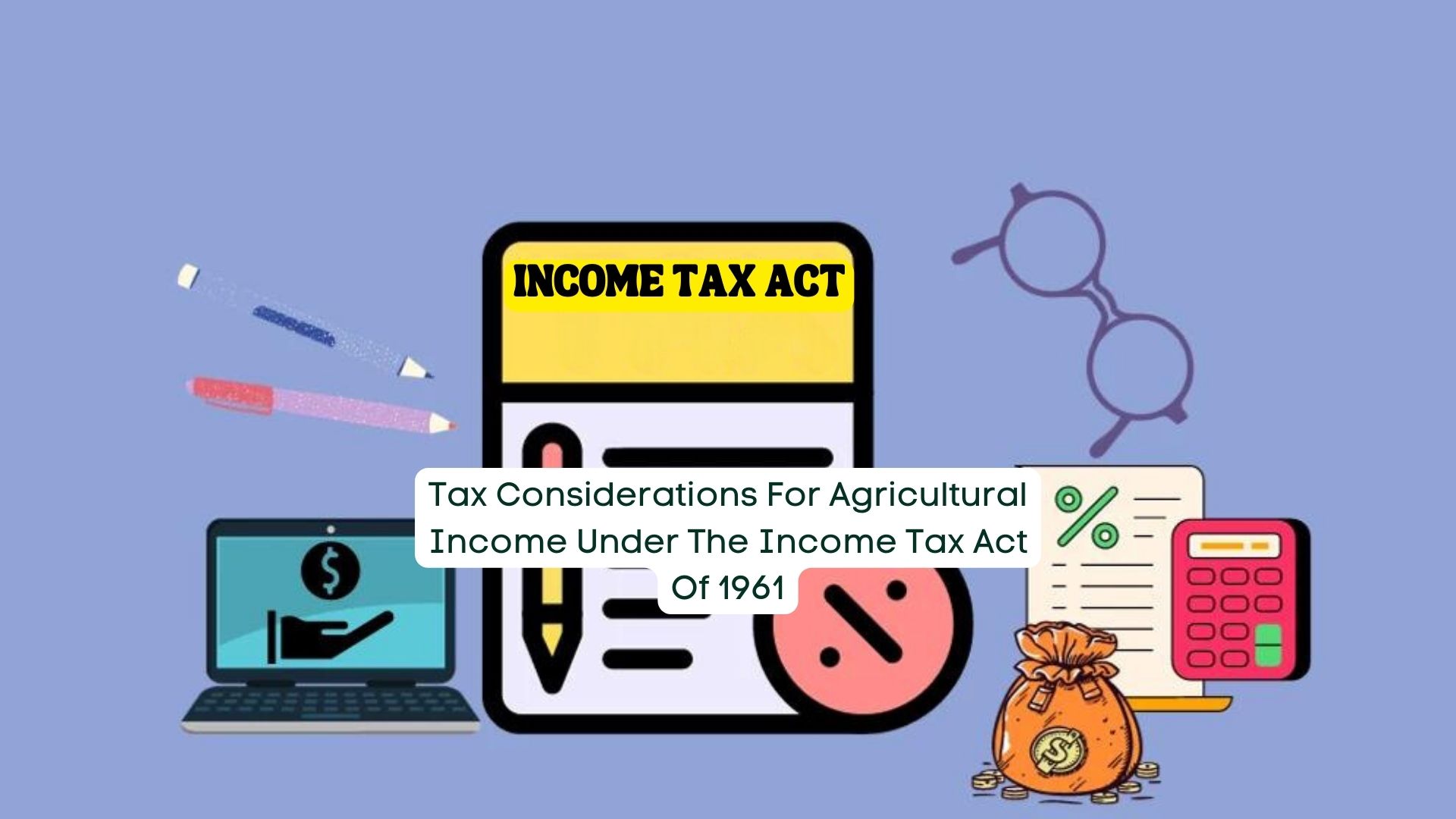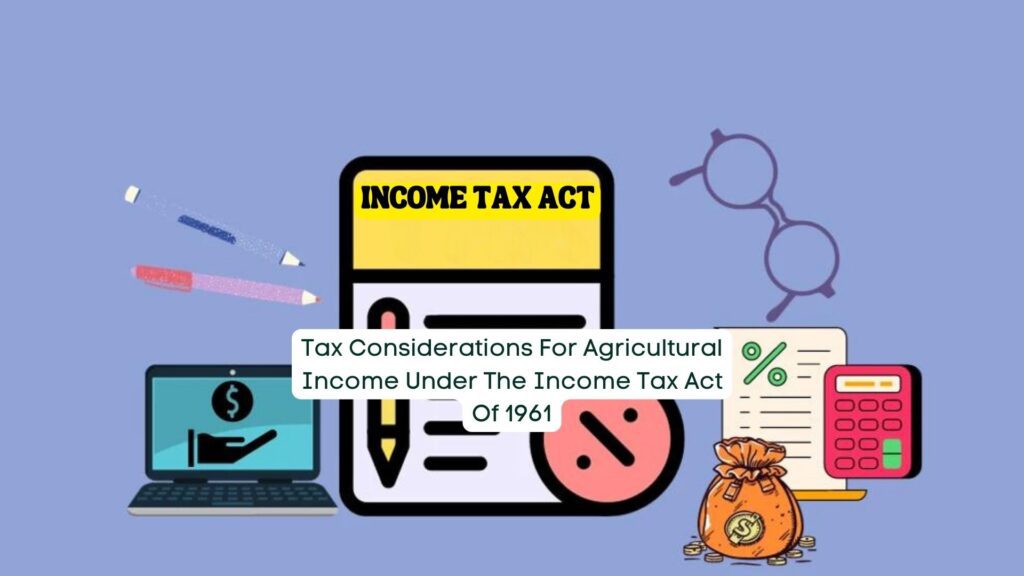
23 Feb Tax Considerations for Agricultural Income under the Income Tax Act of 1961

Agriculture stands as the predominant occupation in India, often serving as the sole income source for a significant portion of the rural populace. Given the vital role agriculture plays in meeting the country’s food needs, various governmental initiatives, including tax exemptions, aim to bolster this sector. While the exemption of agricultural income from taxation might seem straightforward, delving deeper reveals nuances in its tax implications. Let’s delve into the intricacies of Tax Considerations for Agricultural Income.
Understanding Agricultural Income
The Income Tax Act of 1961 delineates agricultural income, encompassing three primary activities:
- Rent or Revenue from Agricultural Land: This includes income generated from leasing out agricultural land, excluding proceeds from land sales.
- Proceeds from Agricultural Activities: Defined by the Supreme Court in CIT v. Raja Benoy Kumar Sahas Roy, agricultural activities entail both basic operations (e.g., cultivation, planting) and subsequent operations (e.g., harvesting, preparation for market). Additionally, income from nursery-grown saplings or seedlings is deemed agricultural income.
- Income from Agricultural Produce: Income derived from processing agricultural produce for market sale, maintaining its original character.
Taxation of Agricultural Income
While agricultural income enjoys tax exemption, the Income Tax Act introduces a method for indirectly taxing such income through partial integration with non-agricultural income. This method aims to subject non-agricultural income to higher tax rates. The conditions for its application include:
- Applicability: Individual taxpayers, Hindu Undivided Families (HUFs), Associations of Persons (AOPs), Bodies of Individuals (BOIs), and artificial juridical persons must utilize this method for calculating taxable income.
- Thresholds: If net agricultural income exceeds Rs. 5,000 during the fiscal year, and non-agricultural earnings surpass specified thresholds based on age categories.
Calculation of Taxable Agricultural Income
When agricultural income falls outside the aforementioned section’s purview, a separate tax assessment is necessary. Taxpayers must file returns using ITR 1 if agricultural income is below INR 5000, otherwise, ITR 2 is required, which provides a dedicated section for declaring income details.
Tax calculation involves:
- Inclusion of Agricultural Income: Adding agricultural income (A) to the individual's base income (B) to calculate tax (T) on (B+A).
- Incorporating Basic Tax Slab Benefit: Adding the basic tax slab (S) to agricultural income and computing tax (T) on the total.
- Determining Income Tax Liability: Deducting tax on (S+A) from tax on (B+A) to ascertain the final income tax liability.
Conclusion
Aggregate consideration of agricultural income in tax calculations not only prevents overpayment of taxes or interest but also aids governmental monitoring of overall tax revenues from diverse sectors.


No Comments